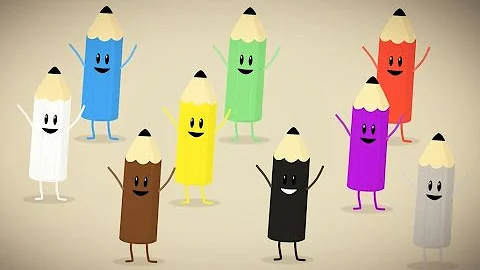, we wrote an article: Can your child really count? Front-line teachers offer tips to teach children how to quickly understand the decimal system, helping many children overcome the two hurdles in primary school mathematics learning: the decimal system and digit numbers. If the child uses those methods and has a solid grasp of counting, we can easily move on to learning addition.
Many exercise books for young children are accustomed to arranging addition within 10 and within 20. Each book has more than ten or even dozens of pages, and then lists a large number of calculations on each page for children to fill in the blanks.
This method is the so-called question-sea tactic. By doing a large number of questions, we hope that the children can "memorize" the corresponding answers by familiarizing themselves with the exercises. Whether the children understand, how to understand, and to what extent they understand are not within the scope of the exercise book. Inside.
What if the addition within 20 is extended to within 50 or even within 100? Can the child still correctly calculate the answer to each question? Just like 9999+9998=? How should children calculate the question? Do you find it difficult?

is actually not difficult. This question only requires an extension of a core method used in primary school mathematics calculations. This method is called the "adding ten method" . The core idea is that when doing addition, add Split the numbers on both sides of the number, first make up 10, and then calculate. It can greatly improve mental arithmetic skills and flexible problem-solving abilities.
Some parents may say: "I know the ten ways to make up, there is a special formula." For example, this song:
1919 are good friends,
2828 are holding hands,
3737 are really close,
four, six, four and six go together,
five and five make up a pair of hands.
or
9 requires 1,
8 requires 2,
7 requires 3,
6 requires 4,
5 requires 5.
Some parents will buy special exercise books to train their children to be familiar with the Ten Methods without any explanation. As everyone knows, both of these practice methods are flawed. In the oral formula method, if one sentence is memorized incorrectly, the entire sentence will be wrong. However, if the calculation formula is listed directly, the child has not experienced the process of constructing the representation, and will feel that the calculation formula is too abstract and difficult to understand.
In fact, for children in the transitional age group, the best way is to use real objects in life to help children develop their number sense and establish the relationship between real objects and mathematical symbols, like this:
"An'an, can you Tell me how many oranges there are in these two boxes?" An'an's mother asked.

An'an thought for a while and said: "There are 9 oranges in the box on the left, 7 in the box on the right, counting 7 from 9, followed by 10, 11, 12, 13, 14, 15, 16, a total of 16 "Oranges."
An'an's mother asked again: "You still count like this, starting from 7 and counting to 9, is it okay?"
An'an replied: "Yes, but the number is a bit too complicated. "
An An's mother reminded An An: "Is it easier to see how many oranges there are in total by moving one orange from the right box to the left?"

An An said happily: "This method is simple! Few, and I can easily see that there are 16 in total."
An'an's mother took out a paper and pen, "If you were asked to use a mathematical formula to express the process of moving oranges, would you write it?"
An'an touched the little one. In my head, I wrote this formula on the paper:

and then quickly filled in the three spaces with the numbers 1, 6, and 16 respectively.
's mother smiled with satisfaction and asked again: "Just now you split 7 into 1 and 6, is it okay to split 9?"
An An nodded and said, "Yes, I will split it like this." Then she wrote on the paper It is written on it:

Parents can follow this approach and use common items at home, such as toys, candies, etc., to guide their children in splitting and adding up to ten, and completing the calculations corresponding to the splitting. In this way, combined with the basis of the decimal system, children can establish representations in their understanding of carry addition within 20, form calculations, and finally calculate the result.
Such exercises are continued, and the child has established a representation and understood the method of adding ten. In , the understanding and understanding of algebra will be more profound and thorough, and he can easily calculate additions within 50 or even within 100.
So, if you extend it further, you can easily get 9999+9998= by splitting numbers? The result of this calculation. Since 9998 = 1 + 9997, then 9999 + 9998 = 9999 + 1 + 9997 = 19997.
It should be noted that the early stage of the Ten Methods must be to help children truly understand and apply them on the basis of establishing the representation until they master it. Of course, in addition to using physical demonstrations, you can also draw pictures to help understand.
For example, in the two pictures below, if you want to count the total number of items, you can circle 10 first, then write the calculation according to the circle method, and finally get the result.


The ten-number method is a very simple and easy-to-understand method. Its ideas can also be extended to other aspects, such as in base 8, 6+7=?
Are you unable to answer the question all of a sudden? If you use the method of splitting the numbers and rounding them up, this problem may not be so difficult.
6+7=5+1+7=5+10 (in octal base)=15, that is, in octal base, 6+7=15. Isn't
much simpler than summing in base 10 and then converting to base 8? If you still find it difficult to understand, you can try drawing pictures to help. (Tip: imitate the decimal system and draw two boxes with 8 grids)
Ok, here is a parent-child game. Parents can use it to train their children's proficiency in addition within 20!
game preparation
playing cards with card numbers greater than 5 and less than 10 and two boxes.
game process
1. Put an equal number of cards into two different boxes and shake them evenly, each person has a box;
2. Take out a playing card from his own box, put it away, and then turn it over at the same time. Open, calculate the sum of the two cards;
3. Use the rush answer method, whoever tells the answer first will get the two playing cards, and the winning card is put into the winner's box;
4. Shake the cards and repeat the previous game process. Whoever has more cards in the end wins.

This article is excerpted from "Lighting up Children's Eyes on Mathematics·Constructing the Foundation"
Author: Ci Yan

| Author introduction |
■ Ci Yan, Beijing Zhongguancun No. 2 Primary School mathematics teacher, core member of the primary school mathematics distance training team of the Ministry of Education, He is an outstanding instructor for national distance training, an instructor for “Promoting the Professional Development of Mathematics in Primary Schools in Beijing”, and a main editor of the Ministry of Education’s compulsory education new curriculum distance training series “Primary School Mathematics”. He is the author of "Three Bread Princess Sisters", "Twin Brothers", "The Best Vegetables", "The Day the Princess Came", "My Beautiful Ruler", "Auntie Haha who took the magic potion" and other mathematics books, and compiled "Comprehensive Solutions to Primary School Textbooks" "" PHS Mathematics Homework", "Classroom Refining" and many other works. In teaching, students are guided to accumulate experience in mathematical activities and construct mathematical concepts from life and games.
"Lighting Up Children's Eyes on Mathematics" (all 3 volumes)
Author: Ci Yan
Price: 98 yuan (all three volumes)
Publisher: Beijing Normal University Press
Click on the cover image to buy now






















